10 OCTOBER 2011
YOUR WORDS
Readers are invited to add their comments to any story. Click on the article to see and add.
BTN DISTRIBUTION
BTN also goes out by email every Sunday night at midnight (UK time). To view this edition click here.
- COMMENT: The London airports' dilema
- Accor’s MGallery Collection for London
- ANA to introduce Dreamliner into Europe
- Arik Air to Abu Dhabi and adds the biggest Boeing
- Atlantic Airlines returns to Coventry Airport
- Aviation Foundation lobby group set up by major players
- Biofuel flight for Iberia
- CityFlyer for 2012
- Dubai to the heart of Africa
- Europcar introduces “eReady”
- Heathrow Terminal 3 gets airside guest rooms
- London gateway sponsored by Emirates
- Oman ‘boutique’ hotel
- Passenger traffic slows down
- Pullman Hotels for the UK
- Radisson Edwardian for Guildford
- Ryanair Cash Passport
- Salt and pepper pots to go says Virgin Atlantic
- SkyWork Airlines wins the Race to the Top of Europe
- Starbow is a new Ghanaian airline
- Z Hotels in the middle of Soho
- MOTORING UPDATE
- REFLECTIONS FROM YOUR AVIATION LAWYER
- AND FINALLY - A motoring week means a motoring story
The Business Travel News
PO Box 758
Edgware HA8 4QF
United Kingdom
info@btnews.co.uk
© 2022 Business Travel News Ltd.
ANA to introduce Dreamliner into Europe
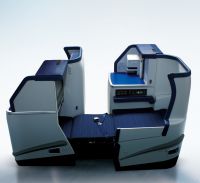 Frankfurt is to become the first European airport to receive the brand new Boeing 787 with ANA non-stop flights beginning from Haneda Tokyo on 21 January 2012.
Frankfurt is to become the first European airport to receive the brand new Boeing 787 with ANA non-stop flights beginning from Haneda Tokyo on 21 January 2012.
A new route will complement ANA’s four existing European services from Narita to Charles de Gaulle, Frankfurt, Heathrow and Munich. This is likely to be popular with regular (and inquisitive) travellers wishing to sample the most advanced airline now flying.
Larger than the 767, the most obvious difference to its predecessor will be the large windows and innovative interiors. Not so apparent is the overhead compartments, the largest in the industry. They are approximately 30% larger than the compartments on the Boeing 777 and have enough space to hold four large-size carry-on bags. Also worthwhile mentioning discreetly are the washrooms which are equipped with Washlet seats equipped with a hot water washer designed for in-cabin use. These seats were jointly developed by Toto Ltd, Jamco Corporation and Boeing.
Flight time will be around eight hours. The seat layout is expected to provide 46 Business Class and 112 Economy. www.ana.co.jp
Aviation Foundation lobby group set up by major players
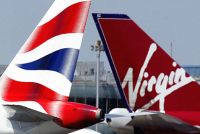 The Aviation Foundation has been created by BAA, British Airways, Manchester Airports Group and Virgin Atlantic as a specific, fit-for-purpose campaign group. Flying Matters, which attempted to do much the same job, was considered too cumbersome to be effective, and was wound up in April.
The Aviation Foundation has been created by BAA, British Airways, Manchester Airports Group and Virgin Atlantic as a specific, fit-for-purpose campaign group. Flying Matters, which attempted to do much the same job, was considered too cumbersome to be effective, and was wound up in April.
The Aviation Foundation has been kept small to ensure a tight, flexible and timely campaign approach. Its role is advocacy, not industry representation, and its structure has been developed with this in mind. Appointed as Director is Rob Gray (38) former Deputy Chief Executive of The Countryside Alliance and previously Editor of both Shooting Times and Shooting Gazette.
A briefing note states that “the Aviation Foundation needs to be focused and targeted in our communications with the public and politicians. The Aviation Foundation will raise awareness of the contribution of aviation to the British economy and its role in the private sector-driven recovery. One of our objectives is to reach out and build alliances and coalitions with others in the sector wherever it helps the campaign.
The Aviation Foundation is not intending to promote itself for its own sake but to rebalance the debate about aviation to reflect properly and positively aviation’s contribution to the United Kingdom. As yet no website.
Dubai to the heart of Africa
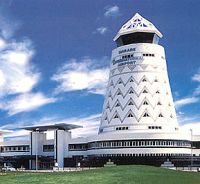 Emirates extensive African network is to be boosted again with the launch of two new destinations – Lusaka, the capital of Zambia, and Harare, the capital city of Zimbabwe. Zambia and Zimbabwe, which share a border with the Victoria Falls, one of the natural wonders of the world, will now be linked with a five times weekly flight from Dubai, starting from 1 February 2012.
Emirates extensive African network is to be boosted again with the launch of two new destinations – Lusaka, the capital of Zambia, and Harare, the capital city of Zimbabwe. Zambia and Zimbabwe, which share a border with the Victoria Falls, one of the natural wonders of the world, will now be linked with a five times weekly flight from Dubai, starting from 1 February 2012.
The Dubai – Lusaka – Harare service will be operated by an A330-200 aircraft in a three-class configuration that offers 12 luxurious First Class seats, 42 seats in Business Class and generous space for 183 passengers in Economy Class.
The new route should work very well for Emirates feeding into its hub at Dubai. From the UK, Emirates operates 105 flights per week to Dubai, where passengers can take a convenient onward connection to Zambia and Zimbabwe. The airline flies five times a day from Heathrow, three times daily from Gatwick and Manchester, double daily from Birmingham and daily from Newcastle and Glasgow. www.emirates.com
London gateway sponsored by Emirates
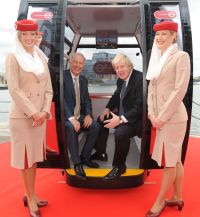 Emirates is the sponsor for the new cable car across the Thames linking the Greenwich Peninsula and the Royal Docks. To be known as the Emirates Air Line, and worth £36m in a 10-year deal, the system should be up and running well before the start of next year's London Olympics.
Emirates is the sponsor for the new cable car across the Thames linking the Greenwich Peninsula and the Royal Docks. To be known as the Emirates Air Line, and worth £36m in a 10-year deal, the system should be up and running well before the start of next year's London Olympics.
With a capacity to carry up to 2,500 people per hour in each direction in the peak, equivalent to the capacity of 30 buses per hour, it is anticipated the Emirates Air Line will transport two million passengers per year.
Creating a direct link between the O2, Europe’s biggest entertainment venue, and ExCeL, the UK’s largest exhibition centre, the Emirates Air Line will also provide an additional interchange between the DLR and Jubilee line.
The Mayor of London Boris Johnson was joined by Tim Clark, President, Emirates Airline to announce the sponsorship deal. The Emirates Air Line will feature on the iconic Tube map and be included in Transport for London's (TfL) travel information. As title sponsor, Emirates will receive a range of naming and branding rights, including the right to name the scheme, its stations and the creation of a joint logo. www.emirates.com www.tfl.gov.uk
Pullman Hotels for the UK
 Accor, the Paris-based hotelier, has confirmed that it is rebranding the Novotel in London’s Euston Road as its first UK Pullman. Work will start shortly at the 312-room property to bring it up to the higher standard required for a Pullman. Completion has been targeted for well in advance of the London 2012 Olympics.
Accor, the Paris-based hotelier, has confirmed that it is rebranding the Novotel in London’s Euston Road as its first UK Pullman. Work will start shortly at the 312-room property to bring it up to the higher standard required for a Pullman. Completion has been targeted for well in advance of the London 2012 Olympics.
Ideally situated about half way between St Pancras/Kings Cross and Euston stations the property also features the 450-seat Shaw Theatre, part of London’s West End, but also integrated into the hotel for conventions and gatherings.
Pullman is an up-market brand which, by the end of 2011, will include 70 hotels across Europe, Africa, Middle East, Asia-Pacific and Latin America. www.pullmanhotels.com
Salt and pepper pots to go says Virgin Atlantic
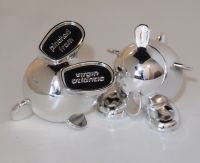 Virgin Atlantic is phasing out its “highly collectable” salt and pepper sets. Thousands of the coveted condiments have disappeared since they were introduced over 12 years ago (The Editor denies that the pair that adorns his dining room table were stolen – Richard Branson on a press trip said “take them”).
Virgin Atlantic is phasing out its “highly collectable” salt and pepper sets. Thousands of the coveted condiments have disappeared since they were introduced over 12 years ago (The Editor denies that the pair that adorns his dining room table were stolen – Richard Branson on a press trip said “take them”).
So sought after have they become that there is even a thriving trade on eBay with individual pieces selling for up to £20 each. However, those days are coming to an end. Next month, Virgin Atlantic is replacing all of the cutlery and dining ware sets across their entire Upper Class fleet – and the old salt and pepper pots are going to disappear.
Said Virgin Atlantic spokeswoman Janine Doy:
“Who could have guessed that salt and pepper pots designed for our aircraft would one day be found in homes all over the world and we are thankful to our Upper Class passengers for spreading the message around the globe.
“Having so many people pinching our salt and pepper pots is, I suppose, a back handed tribute to how well these items have been designed.
“We’re expecting a last minute rush when fans realise that their supply is coming to an end.” www.virginatlantic.com
Z Hotels in the middle of Soho
 Said to be the UK’s newest hotel group, Z Hotels, will launch today (10 October) a flagship property in the heart of London’s Soho.
Said to be the UK’s newest hotel group, Z Hotels, will launch today (10 October) a flagship property in the heart of London’s Soho.
With room rates starting from just £85, Z Hotels Soho is the first hotel to be designed with what the property calls the “Urbanite Stay”, short stay accommodation offering high quality at an affordable price in prime city centre locations. All rooms feature the latest 40” LED High Definition TVs with all Sky Sports and Sky Movies available at no extra cost, power showers, i-docking stations, and free wi-fi throughout the hotel. This first hotel is situated in Soho just off Cambridge Circus, essentially in the heart of the capital’s entertainment area.
The 85-room property is a conversion of 12 Georgian townhouses. The Z Café will provide a pleasant oasis at any time of the day or night.
A number of further Z hotels are due to launch in central London this year and next. www.thezhotels.com
AND FINALLY - A motoring week means a motoring story
As the officer makes out the second ticket for the illegal radar detector unit, the man glowers at his wife and says through clenched teeth,
'Woman, can't you keep your mouth shut?"
The officer frowns and says, "And I notice that you're not wearing your seat belt, sir. That's an automatic £75 fine."
The driver says, "Yeah, well, you see, officer, I had it on, but I took it off when you pulled me over so that I could get my licence out of my back pocket."
The wife says, "Now, dear, you know very well that you didn't have your seat belt on. You never wear your seat belt when you're driving."
And as the police officer is writing out the third ticket, the driver turns to his wife and barks, "WILL YOU PLEASE SHUT UP?"
The officer looks over at the woman and asks, "Does your husband always talk to you this way, Ma'am?"
I love this part.
"Only when he's been drinking."
COMMENT: The London airports' dilema
Desperate times mean desperate measures. That seems to be the airline industry's reaction to a Government/Civil Service suggestion last week to link Gatwick, Heathrow, and very, very surprisingly RAF Northolt, by high-speed rail.
Maybe Whitehall has been reading AERBT’s comments on the little used quasi-military airfield north of Heathrow and west of central London. Or someone, now charged with dealing with the airport problem, has taken down some dusty files and discovered that in fact London has a seventh commercially licensed airport (Heathrow, Gatwick, Stansted, Luton, London City and Southend, being the others in passenger number order).
We also read in the newspapers last week of problems for Agusta Westland at Yeovil. Readers may recall the highly successful British Caledonian helicopter link between Gatwick and Heathrow (100,000 passengers annually). Dropped, just like the third runway, for pure political purposes. Its resurrection would be cheap and very effective. And why not bring in Stansted too. 21st century helicopters are not noisy. When it comes to the alternative of massive building works they might even be vote catching.
AERBT believes that the solution to the London airports problem is Heathrow’s third runway. Northolt remains a short term, cheap and highly attractive alternative.
Essentially the idea for what has been termed “The Heathwick link” is for a mostly underground rail line between the major airports with a journey time of 15 minutes. The cost is put at £5bn. London Mayor Boris Johnson is considering the idea as an alternative to any Thames Estuary project.
A Department for Transport spokesman said: "This proposal will form a useful contribution to the debate and will be considered alongside all other responses."
But a spokesman for BAA, which owns Heathrow, said a rail link would not solve the problem of runway capacity.
He warned: "A virtual hub between Heathrow and Gatwick faces seemingly insurmountable technical, operational, political and financial challenges, and would take many years to deliver."
The scheme is to be included in the Government's review of aviation policy, to be published for consultation in the spring of 2012.
The Heathrow quandary clearly has the Government rattled. Why else leak Heathwick during the Conservative party conference. (see also Aviation Foundation lobby group set up by major players below).
Malcolm Ginsberg
Editor in Chief
Arik Air to Abu Dhabi and adds the biggest Boeing
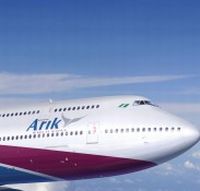 Abu Dhabi is to be served from Lagos for the first time. Rapidly expanding Arik Air, Nigeria’s largest international carrier, from 29 November will operate a three times weekly non-stop service connecting the UAE capital. An Airbus A340-500 will be used for the flight with 36 full flat-bed seats in the premium cabin and 201 Economy.
Abu Dhabi is to be served from Lagos for the first time. Rapidly expanding Arik Air, Nigeria’s largest international carrier, from 29 November will operate a three times weekly non-stop service connecting the UAE capital. An Airbus A340-500 will be used for the flight with 36 full flat-bed seats in the premium cabin and 201 Economy.
From Lagos, Arik offers a number of West Africa destinations including the oil city of Port Harcourt and other Nigerian domestic destinations plus Côte D’Ivoire, Ghana and Senegal.
Arik Air has also announced that it has become the latest carrier to sign up for the brand new Boeing 747 Intercontinental, first deliveries of which are expected before the end of the year to Lufthansa. www.abudhabiairport.ae www.arikair.com
Biofuel flight for Iberia
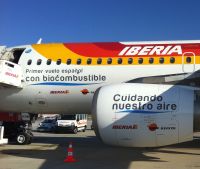 Iberia has become the latest airline to experiment with biofuel, working together with Repsol the global energy company. The airline has flown a commercial flight by Airbus A320 from Madrid to Barcelona which burned some 2,800 kg of a mixture of 75% conventional A-1 jet fuel and 25% biofuel derived from the camelina sativa plant. The use of the mixture brought a reduction of nearly 1,500 kg of C02 emissions.
Iberia has become the latest airline to experiment with biofuel, working together with Repsol the global energy company. The airline has flown a commercial flight by Airbus A320 from Madrid to Barcelona which burned some 2,800 kg of a mixture of 75% conventional A-1 jet fuel and 25% biofuel derived from the camelina sativa plant. The use of the mixture brought a reduction of nearly 1,500 kg of C02 emissions.
The second-generation biofuels is a mixture made by ASA of synthesized paraffin bio-kerosene produced by Honeywell-UOP and evaluated and certified by Repsol at its technological centre, which allows an almost 20% reduction in emissions of greenhouse gases.
Camelina sativa is an inedible oil plant that grows widely and can be cultivated in Spain. Unlike other plants used for biofuels, camelina enriches the soil in which it is grown.
Iberia is the latest airline to pursue biofuel development in a bid to reduce emissions and dependency on (very expensive) oil based fuels. These include Thomson Airways in the UK, Air France-KLM, Finnair and Lufthansa. British Airways is developing a synthetic fuel plant not far from London City Airport. www.repsol.com www.iberia.com
Europcar introduces “eReady”
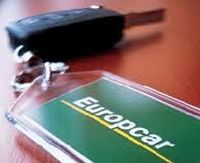 “eReady” is the name of a new online checkout service to improve the speed and efficiency of the car hire experience. With eReady, Europcar customers can save time at the counter because they will have already activated their Rental Agreement online. Initial response to the service has been very positive.
“eReady” is the name of a new online checkout service to improve the speed and efficiency of the car hire experience. With eReady, Europcar customers can save time at the counter because they will have already activated their Rental Agreement online. Initial response to the service has been very positive.
Customers just need to make their booking online. Once made a banner appears on the confirmation screen inviting them to activate the eReady service. A pop-in box explains eReady and asks customers to confirm two tick boxes. The customer is asked to enter their full contact details. A confirmation appears on the screen once the service is activated. When the customer arrives at the rental station, the Rental Agreement will have already been pre-printed. The vehicle is then added and the customer just needs to show their identification, driver’s licence and payment details. www.europcar.com
Oman ‘boutique’ hotel
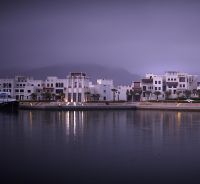 Now open is Oman’s newest boutique 4-star hotel, The Sifawy, located in Jebel Sifah and an easy one hour’s drive from the capital city of Muscat and the country’s international airport.
Now open is Oman’s newest boutique 4-star hotel, The Sifawy, located in Jebel Sifah and an easy one hour’s drive from the capital city of Muscat and the country’s international airport.
The Sifawy, meaning those ‘from Sifah’ offers 55 guest rooms, including 30 suites, and each room has a private balcony. Guests in the Marina Suite are provided with a personal butler who will look after all aspects of guest stays. The property features a large swimming pool, outdoor Jacuzzi, fitness centre, treatment room, in addition to a wide range of activities and excursions.
Jebel Sifah is fringed with sandy white beaches and turquoise waters of the Arabian Sea and has the Hajjar mountain range as a majestic backdrop making it extremely picturesque. Guests looking for authentic regional and international dining experiences can dine at the hotel’s restaurant, Al Sabla, or the beautiful beach eatery restaurant, Al Sammak, which offers fresh, locally-fished seafood.
Ideally located in the heart of the picturesque marina town, close to the main entertainment hub with restaurants, cafés, shops and buzzing nightlife. www.sifawyhotel.com
Radisson Edwardian for Guildford
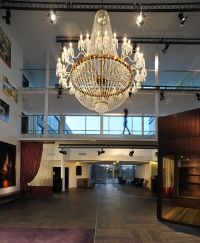 Guildford, the Surrey market town equal distance from both Gatwick and Heathrow, now has a Radisson Edwardian. The visually stunning 183-room property has opened in the heart of this vibrant Surrey town about 30 miles from the centre of London, about the same distance from the airports.
Guildford, the Surrey market town equal distance from both Gatwick and Heathrow, now has a Radisson Edwardian. The visually stunning 183-room property has opened in the heart of this vibrant Surrey town about 30 miles from the centre of London, about the same distance from the airports.
The 4-star deluxe hotel fuses the façade of an ancient coaching inn with an ultra modern glass structure featuring a double height atrium with inspired interiors, including a three-metre chandelier and a library kiosk – an eyrie to observe without being seen, to wait for colleagues. The hotel offers complimentary wi-fi throughout, mobile phone hire and a full service business centre, whilst guest rooms have laptop safes and a personal phone number with voicemail.
Facilities include flexible event space, which can be subdivided into three rooms or opened up to hold a cocktail reception for up to 400. In addition there are three meeting rooms with natural daylight (two hold 30 each theatre-style and may be combined), plus a Board Room for 12, each featuring the latest technology and on site AV support. There is a spa, pool and gym. www.radissonedwardian.co.uk
SkyWork Airlines wins the Race to the Top of Europe
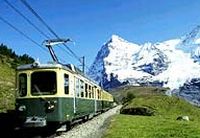 The Jungfraujoch at Interlaken, Europe’s highest railway station, was the finishing point of a unique race, reminiscent of times gone by, which coincided with the opening of the ERAA conference (see last week’s AERBT).
The Jungfraujoch at Interlaken, Europe’s highest railway station, was the finishing point of a unique race, reminiscent of times gone by, which coincided with the opening of the ERAA conference (see last week’s AERBT).
SkyWork Airlines of Switzerland (perhaps with some local knowledge?) clocked the fastest time in a race involving six competitors from the British Swiss Chamber of Commerce (BSCC) and six different routings from London to the point known as ‘The Top of Europe’. Philip Worley, Strategy Manager from UK Trade & Investment (UKTI), reached the top of Jungfrau, in a speedy 303 minutes from his starting point at London City Airport flying direct to Bern – arriving 40 minutes ahead of his closest contender.
Five other competitors entered the race from London to the top of Jungfraujoch on different routings including: British Midland Airways/Swiss Air Lines from Heathrow to Basle, easyJet from Gatwick to Geneva, easyJet from Luton to Geneva, Swiss Air Lines from Heathrow to Zurich and Swiss Air Lines from London City to Zurich. Finish times ranged from the winning 303 minutes to 494 minutes, with one competitor flying from Heathrow to Zurich dogged with ‘baggage issues,’ sadly unable to reach Jungfraujoch at all. www.flyskywork.com
MOTORING UPDATE
Jaguar XF 2.2 Diesel Premium Luxury
More Power and Refinement of Jaguar’s XF
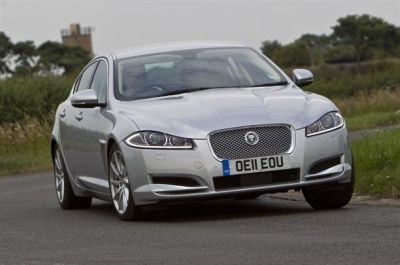 Grace, Space, Pace...for years this trio of words have been associated with successive Jaguar models and judging by the appearance of the just extensively revamped Jaguar XF saloon range they remain justifiable to a great degree even in today’s hotly contested premium class.
Grace, Space, Pace...for years this trio of words have been associated with successive Jaguar models and judging by the appearance of the just extensively revamped Jaguar XF saloon range they remain justifiable to a great degree even in today’s hotly contested premium class.
This svelte machine has been gracing the highways for the past four years, winning up to 10,000 annual sales but Jaguar expect that its latest efforts will see an almost doubling to hit 18,000 units in a full year.
Obviously those extra customers have to come from somewhere, either the newly upwardly mobile or by prising them away from rival products. To this end Jaguar has subtly reworked the body styling by the use of a more curvaceous bonnet, a slightly more prominent grille, new headlights, redesigned side vents in the front wings, new LED rear lights and chrome window trim.
Clearly Jaguar sticks to the wisdom of not trying to mend something that is not broke. To a great degree it has left the well appointed interior virtually untouched though there is evidence of some better quality materials and an improved screen for the satellite navigation system which also links across its directions to a new panel in front of the driver.
It is under the bonnet that the main work has been undertaken in the form of a new 2.2-litre four-cylinder turbo diesel engine to augment the existing 3.0-litre V6 turbo diesel model.
Developed from a proven Land Rover unit to produce an appropriate 187 bhp in a very refined manner and a relaxed 3,500 rpm, this unit is complemented by a new 8-speed selectable automatic transmission that is also applied to the 3.0-litre version.
Having experienced both diesel power units I found that this new smaller unit actually provided a touch more driver entertainment, notably when driven in the Sport mode. I also experienced a slightly lighter feel (though very positive) to the steering action compared with the V6 version.
The gear range, which can be controlled if desired by the small paddles behind the steering wheel, ideally suits the power output under all driving circumstance – fast acceleration or relaxed cruising, this one delivers with aplomb.
From the driving aspect if you are looking for the quality and character synonymous with bye-gone Jaguars then there is plenty of that DNA shining though with this one. Those who said the X-Type was not a true Jaguar when it came to that feel good factor can eat their words. This is a car that drivers have to be prised out of!
Pace: According to Jaguar this ‘cat’ is kept on a leash, limited to a mere 140 mph though slip that leash and it will hit 60 mph from rest in just 8 seconds. That is really shifting for a car of this size/weight! And no longer are Jaguars thirsty beasts, this one has a combined fuel consumption figure of 52.3 mpg (aided by the latest Start+Stop technology) so even the heavy footed well heeled driver should get away with around 40 mpg.
Perhaps a carbon footprint of 49 g/km is behind the class.
Space: The near luxury interior is certainly spacious and very comfortable, rear seat accommodation proved more spacious to me than some contemporary tests suggested while boot capacity, not always generous on some earlier Jaguars, is good at around 550 litres and is augmented by folding seat backs. Luggage retaining metal loops also feature.
Grace: Sit inside the XF and you feel that you have arrived at a very special stage in life. The interior reflects the best in British workmanship and taste. Choose the type of highly polished veneer trim, enjoy the leather seating and trim, soak up the stylish interior presentation. This is the situation that invariably wins sales and also, as history proves, starts a love affair with the marquee.
Jaguar has also moved with the times, the driver’s workstation is both businesslike and good on the eye and is right up to date. I particularly enjoyed the retractable gear selection turret located on the transmission tunnel.
Comparing prices with the opposition this Jaguar may appear expensive and one needs to take into consideration that Jaguar has adopted an off the peg (albeit a very good one) marketing strategy with a lot of the kit standard whereas it is optional on some rivals. It does not sell you short though my test car had over £4,000 worth of options including a heated steering wheel and a blind spot monitor.
Your Editor is the proud owner of a 2.7ltr (now 3ltr) very early XF diesel and is delighted with it, particularly the superb ride, smooth gear change and unique push button gearbox arrangement. If he has a grumble it is the paddle gear change on the steering wheel. It can be tricky on a roundabout. 45 mpg on the new 2.2 should be obtainable. He has an order in for the new baby Jaguar salon when it arrives sometime in 2013. Madam wholeheartedly concurs. You feel that you have arrived at a very special stage in life, and when we tested the competition before purchasing there was no contest.
Rivals include: BMW 5 Series, Audi A6, Peugeot 508, Mercedes-Benz C Class.
STAR RATINGS (out of 10)
Performance 9
Handling 9
Transmission 9
Noise 9
Economy 9
Ride and Comfort 9
Accommodation 9
Styling 9
Brakes 9
Finish 9
TOTAL: 90%
NOTES FROM TED WILKINSON’S MOTORING DIARY
BMW has marked a significant milestone in its history to coincide with the September registration plate change. It has now surpassed the two millionth car mark in the UK, a little over 31 years after BMW UK Ltd sold its first vehicle. The first car sold on 1 January 1980 was an E12 5 Series Saloon. Move forward 1,999,999 cars later and the owner of a BMW 5 Series Gran Turismo has taken delivery of his significant BMW car. www.bmw.co.uk
JAGUAR LAND ROVER has recorded a 26% increase in global retail sales for September 2011 with China delivering another record month with sales up 157% for Jaguar and 85% for Land Rover. This record performance has been driven by sales of the XJ following the introduction of the 3.0l engine and a continuing strong performance from all Land Rover models. www.jaguar.com
The SMMT (Society of Motor Manufacturers and Traders) has released figures for the September plate-change showing that 332,476 new cars were registered, 0.8% below the figure for 2010. This means that third quarter three volumes are down just 0.7%, with January to September volumes down 5% on a year ago. Growth in fleet volumes supported the market while private registrations were down 9.3% and the SMMT expects the full year new car market to end 5.3% below 2010 levels at 1.92 million units. The average new car CO2 emissions fell by 4% to 138.5g/km, largely because diesel cars are accounting for a growing share of the total market, with 49.9% of the market, up from 44.5% a year ago and alternatively-fuelled car registrations also rising to 1.3% market share after a 9.1% rise in volumes. www.smmt.uk
VAUXHALL: A5-Star NCAP safety rating has been gained by the Vauxhall/Opel Ampera electric hatch back model. It is claimed to be the first car to gain a maximum rating for side impact protection. Range is claimed to be up to 300 miles, UK sales start next spring. www.vauxhall.co.uk
Accor’s MGallery Collection for London
 Following the announcement last week of a major UK expansion for its Mercure brand, giant French hotel group Accor has now revealed that the prestigious St Ermin’s Hotel, St James, has become part of its MGallery collection. The Accor involvement follows an impressive £30m transformation and restoration of the historical property by its new owners, US real estate development firm Amerimar Enterprises.
Following the announcement last week of a major UK expansion for its Mercure brand, giant French hotel group Accor has now revealed that the prestigious St Ermin’s Hotel, St James, has become part of its MGallery collection. The Accor involvement follows an impressive £30m transformation and restoration of the historical property by its new owners, US real estate development firm Amerimar Enterprises.
With the opening of the St Ermin’s, MGallery now has its first British foothold and has confirmed that it is looking for further properties of character in the UK that fit into the global brand. At present there are 45 MGallery properties around the world, each one carefully selected including the Hotel Century, Old Town Prague; Caracciolo, Naples and the Hotel Rotary, Geneva. The St Ermin’s has 331 guest rooms including 41 deluxe suites and the wonderful galleried Crystal Ballroom with a capacity for up to 120 diners. www.sterminshotel.co.uk
Atlantic Airlines returns to Coventry Airport
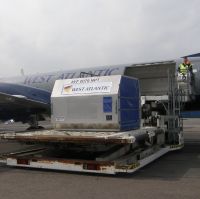 Atlantic Airlines, part of the West Atlantic Group, Europe's largest regional specialist cargo airline, has re-introduced scheduled freight operations at Coventry Airport after a gap of nearly two years. For the immediate future West Atlantic will base two BAe ATP turboprops at the airport serving Dublin, Lille and Maastricht. Discussions are thought to be taking place regarding scheduled passenger services too.
Atlantic Airlines, part of the West Atlantic Group, Europe's largest regional specialist cargo airline, has re-introduced scheduled freight operations at Coventry Airport after a gap of nearly two years. For the immediate future West Atlantic will base two BAe ATP turboprops at the airport serving Dublin, Lille and Maastricht. Discussions are thought to be taking place regarding scheduled passenger services too.
In December 2009 the airport ceased operations after a High Court hearing, however the lease was acquired by Sir Peter Rigby's Patriot Aviation Group on 28 April 2010.
West Atlantic was created in 2008 through the merger of two of Europe's most established independent cargo airlines, Coventry-based Atlantic Airlines, and West Air Sweden. Now employing over 450 staff, and with a fleet in excess of 50 aircraft, Coventry Airport serves as the airline's operational headquarters and is a major engineering base. www.westatlantic.eu
CityFlyer for 2012
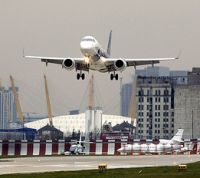 British Airways subsidiary CityFlyer, based at London City Airport (LCY), says that its 2012 schedule will stay much the same as the very successful programme operated this year. Despite persistent rumours that British Airways will introduce a Boston service, to complement the New York Airbus A318 operation via Shannon, nothing seems to be happening on that front. The LCY aircraft are the only ones of their type in the BA fleet, and factory fresh planes are probably 18 months away.
British Airways subsidiary CityFlyer, based at London City Airport (LCY), says that its 2012 schedule will stay much the same as the very successful programme operated this year. Despite persistent rumours that British Airways will introduce a Boston service, to complement the New York Airbus A318 operation via Shannon, nothing seems to be happening on that front. The LCY aircraft are the only ones of their type in the BA fleet, and factory fresh planes are probably 18 months away.
CityFlyer has carried nearly 60% more customers to sunshine destinations from the Docklands airport compared to last year. According to BA CEO Keith Williams the business has now turned around, a major contributory factor the introduction of the Embraer 170 and 190 series aircraft.
Luke Hayhoe, General Manager Commercial BA CityFlyer, said: “We first introduced leisure flights to Mallorca and Ibiza last year and they proved so popular we extended the season and brought them back this year. We also introduced year-round flights to Faro and Malaga this year giving customers the option of some winter sun destinations as well.” www.ba.com
Heathrow Terminal 3 gets airside guest rooms
 Transferring passengers with at least two hours to spare before a connecting flight can now take advantage of the UK’s first ever airside guest rooms operated by No.1 Traveller in Heathrow Terminal 3.
Transferring passengers with at least two hours to spare before a connecting flight can now take advantage of the UK’s first ever airside guest rooms operated by No.1 Traveller in Heathrow Terminal 3.
Building on the successful launch of No.1 Traveller’s flagship ‘super-lounge’ in Terminal 3, the airport hospitality specialist has now launched the facility accessible to all passengers departing from and transferring through Terminal 3. Twelve en-suite cabin-style rooms are offered for stays of two or more hours, with a mini-bar, complimentary internet access, an internet phone and room service, plus infant cots available on request. The bedrooms are perfectly suited to transferring passengers with a layover in the airport, giving travellers the opportunity to catch up on some sleep in soundproofed rooms and have a shower between flights.
The guest rooms are situated next to No.1 Traveller’s flagship lounge at Terminal 3. The lounge boasts a broad and innovative range of facilities, many of which have never before been available to all passengers departing from or transferring through Heathrow Terminal 3. These include the Snug (quiet room), two games rooms, showers, cinema, family room and a travel spa. Each room costs £20 for a single or £30 for a twin room per hour. www.no1lounges.com
Passenger traffic slows down
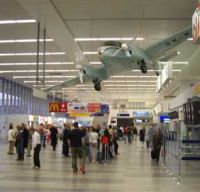 The International Air Transport Association (IATA) announced traffic results for August. While passenger demand was up 4.5% over the previous August, this represents a significant slowing from the 6% recorded in July. The decline in freight markets accelerated. The 3.8% contraction in freight markets recorded in August was more than double the pace of July’s 1.8% decline.
The International Air Transport Association (IATA) announced traffic results for August. While passenger demand was up 4.5% over the previous August, this represents a significant slowing from the 6% recorded in July. The decline in freight markets accelerated. The 3.8% contraction in freight markets recorded in August was more than double the pace of July’s 1.8% decline.
“The industry has shifted gears downward. The pace of growth in passenger markets has dipped and the freight business is now shrinking at a faster pace. With business and consumer confidence continuing to slump globally there is not a lot of optimism for improved conditions any time soon,” said Tony Tyler, IATA’s Director General and CEO.
Comparisons of July to August more clearly indicate the slowdown. The total passenger market fell by 1.6% in August compared to July. International markets declined by 1.8%, while already weak domestic markets shrank by 1%. The total cargo market fell by 1.3%. www.iata.org
Ryanair Cash Passport
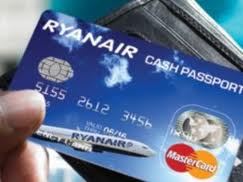 The world’s most annoying airline, Ryanair, has been found out when it comes to the use of the carrier’s new compulsory charge card, allegedly the cheapest way to book a seat on the airline.
The world’s most annoying airline, Ryanair, has been found out when it comes to the use of the carrier’s new compulsory charge card, allegedly the cheapest way to book a seat on the airline.
The user guide for the Ryanair Cash Passport reveals that after six months, anyone who does not use the card will be charged £2.50 a month for inactivity, while a £10 invoice will be made every time the card goes into negative territory because of the inactivity fee. The more you don’t use it the larger the bill!
The list of fees is quite comprehensive. Besides the ones listed above you can be charged for ATM use (£2), actual use of card when purchasing fee (£0.50), cash over the counter (£4), cash out card fee at a bank (£4), cash out fee through Card services (£6), and the addition of a further card (£6).
If you are caught out abroad and need to get cash, beg or borrow. ATM withdrawals in a currency other than the currency of the Card will be exchanged to the currency on the Card at an exchange rate determined by MasterCard on the day the transaction is processed, increased by 5.75%. www.ryanair.com
Starbow is a new Ghanaian airline
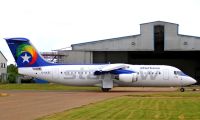 Aero Surveys Ltd, operating under the commercial name ‘Starbow’, based in Accra capital of Ghana, has commenced domestic operations with two BAe 146-300 regional jetliners. The aircraft were supplied by Falko, based at Hatfield, now the owner of the BAE Systems’ commercial aircraft portfolio. (see AERBT 22 August 2011)
Aero Surveys Ltd, operating under the commercial name ‘Starbow’, based in Accra capital of Ghana, has commenced domestic operations with two BAe 146-300 regional jetliners. The aircraft were supplied by Falko, based at Hatfield, now the owner of the BAE Systems’ commercial aircraft portfolio. (see AERBT 22 August 2011)
The two BAe 146-300 are equipped to high standards and configured with eight Business Class seats and 86 Economy Class seats. Domestic services envisaged for ‘Starbow’ include routes centred on Accra and the important regional city of Kumasi and linking them to other destinations such as Tamale and Takoradi.
The company believes in the considerable potential for airline business in West Africa and will do its best to compete effectively within the Region. Airline Business magazine, recently reported that 74% of Intra-African routes have no more than one daily flight and that some 50% of African city pairs are believed to be under served. Aero Surveys Ltd plans to position its brand ‘Starbow’ in the West Africa region and will operate regional international flights with durations of up to two-three hours. The company contracted Inflite UK to provide line and base maintenance. www.flystarbow.com
REFLECTIONS FROM YOUR AVIATION LAWYER
In this second of the series Gates and Company discuss the EU Emissions Trading Scheme in Aviation
EU ADVOCATE GENERAL UPHOLDS ITS LEGALITY BUT IT'S NOT OVER YET!
“Glad that the Advocate General's opinion concludes that our law to include aviation into ETS is fully compatible with international law”, (Connie Hedegaard, EU Climate Commissioner, on Twitter, 6 October 2011)
Summary
It looks likely that the great Aviation Emissions Trade War can be resolved only through political agreement or the passage of time, but not legal action. Time has now almost run out before the aviation sector is included in the EU Emissions Trading Scheme (EU ETS), so barring any last-minute political agreement, we expect it now to come into effect, as planned, on 1 January 2012. The arguments about aviation and the EU ETS will continue, and we advise those who oppose it to monitor, closely and rigorously, its effects on their businesses: by 1 December 2014, the European Commission must report on the operation of the EU ETS in relation to aviation, and may make recommendations for change. Looking further ahead, there is no international agreement on the future of the EU ETS beyond the expiry of phase III in 2020, so there is still all to play for.
Analysis
The Advocate General found that the inclusion of international aviation in the EU emissions trading scheme was compatible with the provisions and principles of international law.
In particular the UK referring court asked whether the claimant airlines could rely on various rules of international law (including customary international law, the Chicago Convention, the Kyoto Protocol and the EU-US Open Skies Agreement) to challenge the validity of the EU ETS in relation to aviation. The Advocate General found that they could not. In particular, the rules of customary international law at issue determined the scope of sovereignty of States and limited their jurisdiction, but did not have an effect on the legal status of individuals. Further, since the EU was not bound by the Chicago Convention, such Convention could not be relied upon as a benchmark against which the EU ETS Directive can be reviewed. The Advocate General found that only Article 7 (applicability of laws and regulations of the parties) and the second sentence of Article 15(3) (application of environmental measures affecting air services) of the Open Skies Agreement could be a valid benchmark.
The UK referring court asked whether the EU ETS was invalid if and insofar as it applied the scheme to those parts of flights which took place outside the EU Member States’ airspace. The Advocate General found that this was not contrary to international law. The EU ETS Directive was concerned solely with aircraft arrivals at and departures from airports in the European Union, and it was only with regard to such arrivals and departures that the airlines had to surrender emission allowances in various amounts, depending on the flight. The fear of “extra-territoriality” was, according to the Advocate General, “untenable…based on an erroneous and highly superficial reading of the provisions of Directive 2008/101” (the aviation ETS Directive).
The Advocate General argued that the international agreements (Chicago, Kyoto, Open Skies) did not affect the validity of the EU ETS. There was no impermissible unilateral action by the European Union outside the ICAO framework since under the Kyoto protocol, the limitation and reduction of greenhouse gases was not the exclusive competence of the ICAO. The Open Skies Agreement did not rule out the application of market-based measures regarding aviation emissions.
Further, the inclusion of aviation in the EU ETS was compatible with the principle of fair and equal opportunity in the Open Skies Agreement. If the EU ETS Directive had excluded third country airlines from the application of the EU ETS then this would have given third country airlines an unjustified competitive advantage over their European competitors.
Finally, airlines were not charged fees, dues or other charges within the meaning of international-law agreements. The EU ETS was instead a market-based measure, the purpose of which was environmental and climate protection. Thus, the emission allowances that had to be surrendered were levied in respect of the emission of greenhouse gases, not merely fuel consumption or based on the persons or property on board.
Scheme will come into effect: legal process almost complete.
In the circumstances, it is not surprising that the Advocate General of the EU Court of Justice has found in favour of the EU’s Emissions Trading Scheme (“EU ETS”) as it applies to aviation. EU law on challenging legislation is still under-developed. We should expect that the full Court, when it rules in 2012, will follow the overall view of the Advocate General. There is no further Court in the EU to which appeal can then be made. Once the Court of Justice rules, the case reverts to the UK for conclusion of the litigation based on the Court’s ruling. The result will be that the UK’s implementing regulations will be found to be lawful, and the EU ETS will apply to aviation from 1 January 2012.
Political and economic battle remains.
No side wishes to back down. The EU’s stance has received a strong boost by this ruling. This will only intensify the political opposition, including from countries that played no part in this particular case. Consider the escalation of retaliatory threats:
• China forced the cancellation by one of its airlines of an order of European-manufactured Airbus, worth $ 3.8 billion. The Hong Kong airline was blocked prior to an announcement that was due at the Paris Air Show earlier this year.
• The US Congress is currently debating H.R. 2594, a bill that would empower the U.S. Secretary of Transportation to forbid U.S. carriers from participating in the EU ETS. The proponents have labelled EU ETS unlawful and unjust.
• Russia has equally threatened retaliation; the transport minister has been quoted as stating “Europe needs to understand that imposing EU ETS on sovereign states like Russia, China and the US could lead to consequences, not just for its airlines, but for the weak European economy.”
• The future debate and scope for influencing the EU ETS now resides at the political level. At this level, there is still a battle of predictions. These predictions concern: (1) the economics of (a) how airlines will be affected and (b) how economies will be affected; (2) the effect on emissions in the EU and the rest of the world; and (3) the future of global negotiations on climate change. Each positive prediction or optimistic forecast is contentious. For example:
• The grant of free allowances to operators between 2012 and 2020 will allow operators to invest in new aircraft, fuel-efficiency and alternative fuels (Connie Hedegaard). This remark was denounced as economically unrealistic.
• The airlines will be able to pass on the cost of additional allowances to their customers. This is hotly disputed: the argument against this is that airlines operate in a highly price-sensitive environment and therefore cannot pass through the additional costs.
• The Commission listed in its “Questions & Answers on the benchmark for free allocation to airlines and on the inclusion of aviation in the EU’s Emission Trading Scheme (EU ETS)” 98 States with no commercial carriers covered by the EU ETS. The purpose of this list was unexplained, but to the extent that it was designed to give the impression that the likely territorial effect of the EU ETS was apparently smaller, it was flawed. About one quarter of those States are in Latin America or the Caribbean, an area which has yet to see major growth in international aviation. Another quarter are blacklisted in the EU, wholly or partly; and various other States are small in relation to their aviation significance – the Marshall and Solomon Islands, for example.
• Over time, the battle of predictions will give way to a battle of experience under the ETS. There will be arguments about the economic effects (and the distribution of those effects) on aviation: are non-EU airlines better off compared to EU airlines, because at least non-EU airlines can avoid flying in the EU? Will short-haul high-frequency carriers suffer disproportionately to long-haul? To what extent and to what effect can the increased costs be passed to consumers? Which routes will become economically marginal as a result of EU ETS-related costs? Will there be route exits, a raising of barriers to entry and a reduction of route-specific competition, lowering economic efficiency? And perhaps the most serious question: will the unilateral approach of the EU lead to the marginalisation of the EU economy, as the major economic superpowers including the US, China, Russia and India find other routes through which to trade? In other words, to what extent will the inclusion of aviation in the EU ETS encourage the creation of new international hubs outside the EU? The experience of the EU ETS, and how such experience is interpreted, will be as contested as the earlier predictions. This will be the backdrop to the political debate of the future.
Conclusion
For the airline industry, the EU Court’s preliminary ruling will have been unwelcome, even if unsurprising. Despite the Advocate General’s clear dismissal of the questions put to the Court, the legal ground remains contentious amongst experts and will not go away. Practically, however, the immediate concern will be compliance, and making the best of the situation, whilst storing up evidence for the future. Meanwhile, the international trade battles at a political level will continue. www.gatesandpartners.com


